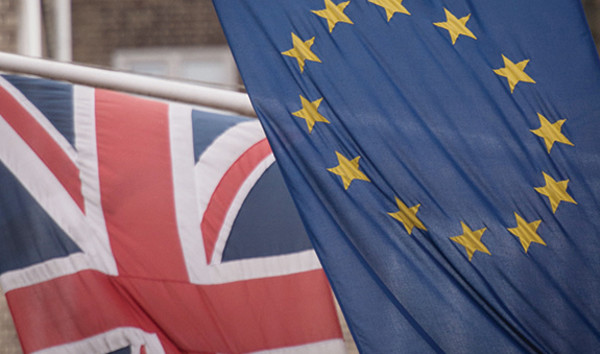

Some investors have moved into ‘safe’ assets ahead of Thursday’s vote amid fears of market falls and further shifts in asset allocation. Markets tumbled last week as investors shifted away from equities, with significant gains for gilts and cash managers.
By June 15 the Vix index, which measures volatility, broke the 20-mark for both European equities and sterling for the first time in more than three months.
Between June 10 and June 16, FTSE 100, FTSE All-Share and FTSE Europe ex UK indices were all down by almost 5 per cent. Bank of America Merrill Lynch (BAML) said June had seen the second largest outflows from UK equity funds in the past decade.
Conversely, the Barclays Sterling Gilts index was up 1.5 per cent, and the IBoxx UK Sterling Corporate index rose 0.3 per cent. Funds in the Investment Association UK Gilts sector delivered 2 per cent on average.
As the probability of a Leave vote increased, the return from gilts surprised analysts. Prior consensus expected a struggle due to international investors seeing UK government debt as less stable in the event the country left the EU.
However, it seems domestic investors flocked to gilts in the name of safety. The yield from 10-year gilts fell to 1.1 per cent.
The BAML global fund manager survey also showed cash levels were at their highest level in almost 15 years, since the bursting of the dotcom bubble.
However, Marcus Brookes, head of multi-manager at Schroders, warned a Remain vote could be painful for those investors that sought shelter.
“The move following a Remain vote could be pretty painful for UK gilts,” he said.
“[Yields] had stood at just under 2 per cent at the start of the year, so [they] have a long way to rise to get back there, creating attendant capital losses.”
Such risks have not stopped investors shifting towards safe assets. BAML’s survey said risk appetite and global equity allocations had reached four-year lows.
It added: “Fund managers’ risk aversion is consistent with recession, yet global growth and profit expectations are at a six-month high and global inflation expectations are at a one-year high.”
Rory McPherson, head of investment strategy at Psigma, said he had been building up protection in his portfolios. He said the firm had increased exposure to gilts and cash in order to deploy capital once the vote outcome was revealed.
While acknowledging gilts’ referendum tailwind, he said investors’ rush to safety would not immediately be unwound given greater economic concerns.
“We don’t expect there to be a huge sell-off in gilts should Remain win as the underlying picture of growth in the UK is not brilliant,” Mr McPherson said.
“Nor do we believe gilts represent good long-term value; hence our trade is more tactical and we have held some in cash to reflect the risk.
“Part of the tailwind in gilts has to do with bond markets pricing in almost a 45 per cent chance of an [interest] rate cut by the Bank of England this year – which clearly reflects Brexit risk.”
Fidelity head of European equities Paras Anand said he expected this week’s and post-result volatility to be more subdued. He said given the withdrawal to cash already seen, markets, pre-vote, could not fall much further.
On post-referendum markets, Mr Anand said: “Risk appetite will return but in a steady way. The markets are not [significantly affected] by events they anticipate and analysed. Markets are more thrown around by left-field events.”
KEY NUMBERS
26bps: Fall in the 10-year gilt yield since June 1
5.7%: Allocation to cash according to the BAML global fund manager survey



